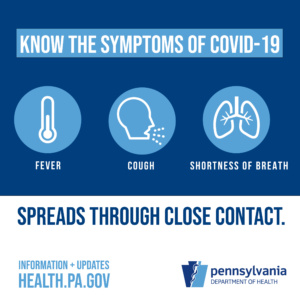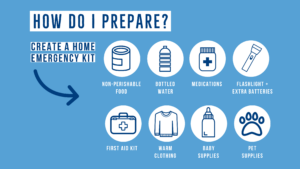Lititz Water Shows Same 90th % Lead Levels as Flint
Rothsville Tests Show Elevated Levels still within EPA Guidelines; Township’s 2nd Water Source Also Shows Lead
Flint, Michigan authorities reported that ten percent of homes there tested positive for lead in tap water at or above 11 parts per billion or higher for the first six months of 2015. In Warwick Township, ten percent of homes tested positive for lead in tap water at or above 11 parts per billion or higher, according to one of two 2014 water quality reports issued by the township.
Ten percent of homes sampled in Rothsville in 2013 showed lead levels of at least 11 ppb, according to data on the annual water quality reports published by the Warwick Township Municipal Authority (WTMA) in 2014. Lead testing is only required every three years by the state. WTMA supplies Rothsville and Warwick Township with water from two separate sources and generates a separate report for each. The 11 ppb is within the federal Action Level of 15 ppb.
RELATED STORY: WHERE CAN YOU GET YOUR WATER TESTED?
By comparison, water in Flint showed 10 percent of homes sampled had 11 parts per billion or more of lead with six of the 69 samples exceeding the federal lead limit of 15 ppb. It’s possible that some Rothsville homes which were not tested have lead levels in excess of the legal limit. Only 10 homes were tested by the township, according to Warwick Township Manager Dan Zimmerman.
Warwick Township is required to publish data on the annual report for 9 out of the ten homes tested, and to indicate if any homes tested above 15 ppb. According to the water report, the township did not have any homes test over the federal limit. LititzDailyNews.com has issued a request under the Right-to-Know Law to obtain all lead test results for Rothsville water. [Editor’s Note: This paragraph was corrected an expanded. A previous version stated that the township did not have to report all test results to the state.]
While the lead test results are below the federal limits, Dr. Marc Edwards and his team of researchers at Virginia Tech, who have led the investigation into water lead levels in Flint, discovered higher levels than those reported to the state. Edwards and team define high lead levels as those that exceeded 5 ppb. They notified Flint residents when two of their three tap water samples contained more than 5 ppb of lead.
“You should consider requesting that your doctor test lead blood levels in any young children or pregnant women in your family,” Edwards advised Flint residents whose water showed over 5 ppb of lead.
In addition to the well that provides water to Rothsville, Warwick Township buys water from Lititz Borough for delivery to 3,130 connections that the township services in the Lititz area, and it reported that lead levels were detected in homes that received borough water, according to a separate water quality reported issued the same year.
RELATED STORY EXCLUSIVELY ON LITITZDAILYNEWS.COM: LEAD FOUND IN LITITZ BOROUGH WATER
RELATED STORY: SHOULD YOU HAVE YOUR WATER TESTED?
LititzDailyNews.com reported that lead levels in Lititz Borough water reached as high as 5 ppb according to the borough’s 2014 report, though Warwick Township reported the 90th percentile value for the Lititz Borough water at 3.1, indicating that 90% of the lead values recorded were at or under 3.1 ppb. Lead is usually released into the water from plumbing lines, meters, and fixtures as it enters a home. The reporting discrepancy for the same water source may be attributed to lead testing which is performed at different residential taps for each area municipality.
However, the township report states that lead levels in the water it obtained from Lititz Borough ranged from “ND (not detected) to .0039 ppb,” which seems to be in contradiction to the 3.1 ppb 90th percentile value on the same report. Township Manager Dan Zimmerman replied to an email requesting clarification, but has yet to reply to a request for an interview.
“Your reference to the .0039 is relating to the detection range of the test used for lead,” Zimmerman wrote in an email to LititzDailyNews.com today. “This is all indicated in our water quality report under that heading.”
While Zimmerman referenced the 3.1ppb level in the borough-sourced water as “well below action level,” he has yet to respond to an email regarding the 11 ppb level found in Rothsville water. If and when he replies, this story will be updated. Update: Mr. Zimmerman responded to an email today around 3 p.m., but did not directly address the 11ppb lead levels in Rothsville in his reply.
The Environmental Protection Agency deems 15 ppb of lead to be the Actionable Level which requires notification by water suppliers to residents and action to reduce corrosion, although the EPA and CDC concur that there is no acceptable level of lead in drinking water. Since neither the borough nor the township lead levels reported were in violation, consumers were only notified as part of the required annual drinking water quality reports for each system.
In an article published in The Guardian, Philadelphia water system came under criticism for its sampling techniques. There is debate about whether the current sampling techniques that may underestimate consumer exposure to lead. A Virginia Tech researcher involved in evaluating lead levels in Flint called into question instructions given to residents to collect tap water samples, which she believes may reduce the reported amount of lead reported. In an open letter to Philadelphia water consumers on January 23, Dr. Yanna Lambrinidou wrote that water utilities achieve compliance with the LCR when over 90% of high-risk homes they sample release lead levels equal to or below 15 parts per billion.
“This means that when a water utility assures its customers that it meets LCR standards, all of the homes it serves may dispense between zero and 15 parts per billion lead, and 10% of the homes it serves may dispense any concentration of lead whatsoever,” wrote Lambrinidou.
How Often is Local Water Tested for Lead?
Lead in drinking water can cause severe medical issues, especially in pregnant women, infants, and children. Delays in physical or mental development and even slight deficits in attention span and learning abilities can be from of the effects of lead. In adults, lead can cause kidney problems and high blood pressure. Blood tests can indicated the level of lead in an individual.
“Experts now use a reference level of 5 micrograms per deciliter to identify children with blood lead levels that are much higher than most children’s levels,” according to a CDC fact sheet. “This new level is based on the U.S. population of children ages 1-5 years who are in the highest 2.5% of children when tested for lead in their blood.” Prior to the change in 2013, parents whose child had from 5-10 micrograms of lead may not have been notified. [Editor’s Note: If your child’s blood lead level has ever tested at 5 micrograms or higher, please email [email protected] for an upcoming story.]
Given the significant health risks, it may come as a surprise that Lititz and Warwick Township water are only tested for lead every three years. The number of homes that each municipality is required to test for lead in drinking water varies, but may be as low as 20-40 residences, according to state documents. Flint tested only 69 homes.
A state spokesperson confirmed on Tuesday that Lititz Borough is only required to provide 20 residential samples. The telephone number on the Lititz Borough water quality report was called during normal business hours, but no one answered. No reply has been received to the message left. If and when we hear from the state, borough, and township, this story will be updated. [UPDATE:A spokesperson for Severn Trent, who operates the Lititz Borough system, responded by phone on Monday and requested pre-publication review of the story, which was denied.]
The Lititz Borough Water System is operated by Severn Trent Environmental Services, Inc. The sources of water for the borough are wells located in Lititz Borough and Warwick Township. Water from the Lititz Borough system is provided to parts of Warwick Township through an agreement. The source of Rothsville water is a well operated by WTMA. A second well is under construction to supply Rothsville.
Samples collected for lead testing are supposed to be obtained from high-risk residences to be representative of the lead levels in the community. But what defines a high-risk home?
Is Yours a High-Risk Home for Lead in Drinking Water?
Lititz Borough sent a special notice to residents prior to measuring lead and copper levels in drinking water in 2013 asking those who were interested in having their water sampled to contact a Severn Trent representative.
In that notice, residents were informed that homes which meet the criteria for possible lead and copper contamination include: 1) Single-family residences built between 1982 and 1985 with copper pipe and/or 2) homes of any age that have lead pipe, partial or complete lines. Offices and apartments are not taken into consideration.
“You may think that your home does not fit these criteria; but your water may still contain lead or copper because of a lead goose neck connection to the water main in the street,” the notice from Lititz Borough states.
Lead enters drinking water primarily through plumbing materials, most usually through corrosion of pipes, solder, fixtures, and fittings, according to a pamphlet published by the EPA. Homes featuring lead service lines, copper pipes with lead solder, brass fixtures, and others may be at higher risk for elevated lead levels.
“The amount of lead in your water also depends on the types and amounts of minerals in the water, how long the water stays in the pipes, the amount of wear in the pipes, the water‛s acidity and its temperature,” according to the EPA pamphlet.
Lead levels can “vary from house to house,” according to a recorded message on the United States Environmental Protection Agency (– USEPA) Safe Drinking Water Hotline, 1-800-426-4791.
Why then, are so few residences tested, and why are they tested so infrequently?
How Often are Lead Levels Measured in Warwick Township and Lititz Borough?
Testing lead levels every three years is allowed by state and federal regulation if the quality of water tested meets certain specifications, like not exceeding the Actionable Level of lead for three consecutive years (15 ppb).
The 2014 Annual Drinking Water Quality Report for Lititz shows that lead was found in Lititz drinking water as recently as 2013, the last time that lead levels were required to be tested in the community. Lead levels in drinking water in the borough are not due to be tested again until 2016.
Under current regulations, the Lititz Borough water supply would reach Actionable Level if over ten percent of homes tested positive for lead levels in at or above 15 ppb. Based on the state documents available at press time, If only 20 borough homes are tested, only two homes would need to be over the allowable lead limit for borough residents to be notified and corrective measures put in place by the borough. The state EPA was contacted for confirmation of those figures on Friday afternoon, but no response was received by press time. Once information is received, we will update the story.
But lead isn’t the only toxic metal that water suppliers need to keep an eye on: copper is also a concern. The Actionable Level (AL) for copper is 1.3 ppm, and the results pictured on the 2013 water quality report above showed levels in Lititz Borough only .05 away from that threshold, at 1.25 ppm. The highest copper level listed on the 2014 report is 1.04 ppm. Rothsville copper 90th percentile was .21 in 2013, and the WTMA Lititz report shows 1.2 for the highest measurement. Copper and lead levels are due to be evaluated this year in both water systems.
According to the EPA, short-term exposure to copper can cause gastrointestinal distress, while long-term exposure can lead to liver or kidney damage. The EPA also advises those with Wilson’s Disease to consult their doctor if the amount of copper in their water exceeds the action level.
Nitrates are also a concern for consumers of Lititz Borough and Warwick Township water, as high levels have been reported in the past. Nitrates in the local water supply will be addressed in a future article here on LititzDailyNews.com.
How to Minimize Lead Risk and Exposure
The EPA recommends the following guidelines in their brochure Is There Lead in My Drinking Water:
- Run the tap before each use until you feel the water temperature change
- Don’t consume water that has been in the pipes of your home for more than 6 hours.
- Some faucet and pitcher filters can remove lead. Look for certification by the NSF International for lead removal on the package.
- Do not use hot tap water to mix infant formula
Should You Test Your Water?
Our next story in this series will be on whether you should have your water tested, how much it costs, and where you can have that testing done locally.
Register to receive LititzDailyNews.com stories by email for free by clicking here. If you have already had your water tested for lead by the borough, township, or an independent lab, email LititzDaily@yahoo.












